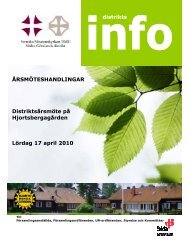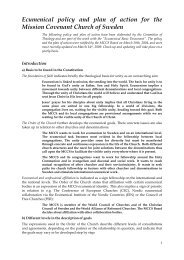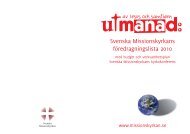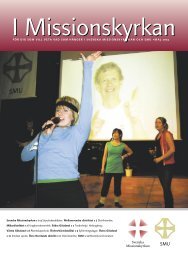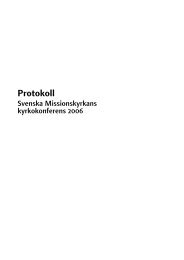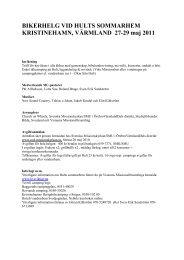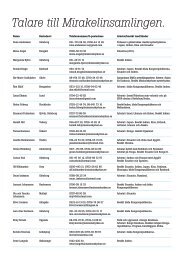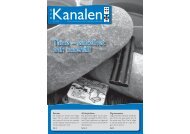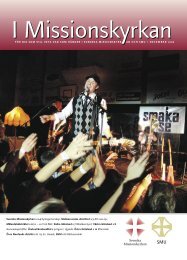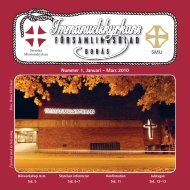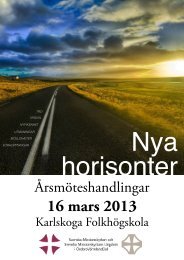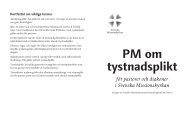Mission and Revolution in Central Asia - Svenska Missionskyrkan
Mission and Revolution in Central Asia - Svenska Missionskyrkan
Mission and Revolution in Central Asia - Svenska Missionskyrkan
Create successful ePaper yourself
Turn your PDF publications into a flip-book with our unique Google optimized e-Paper software.
mounta<strong>in</strong>s, the children “lived” each <strong>in</strong> a wooden box, strapped on to a horse. In those<br />
boxes the children could sit, lie down, st<strong>and</strong> up <strong>and</strong> talk to one another. The route at times<br />
went across glaciers where Arell had to carry the children, one by one, for long<br />
distances. 106 At the Sassar pass, the family very nearly succumbed <strong>in</strong> the snow <strong>and</strong> the<br />
cold. The caravan men had by then turned back home, leav<strong>in</strong>g the family to their fate. All<br />
alone they very nearly froze to death <strong>in</strong> the cold <strong>and</strong> the dark of the night. The follow<strong>in</strong>g<br />
morn<strong>in</strong>g, they managed to walk to a camp place where they could rest some time before<br />
cont<strong>in</strong>u<strong>in</strong>g their journey. 107<br />
On some occasions the missionaries were forced to go home dur<strong>in</strong>g a season when the<br />
route via Leh was impracticable. They then had to take the westerly route from Kashgar<br />
via Pamir <strong>and</strong> Gilgit. This route was shorter, but it was much more difficult. Tra<strong>in</strong>ed<br />
caravan men could however make their way here at nearly any time of the year. The route<br />
had been built for communications between Brita<strong>in</strong>’s two spheres of <strong>in</strong>terest here: India<br />
<strong>and</strong> Kashgar. 108<br />
From Kashgar the route led <strong>in</strong>to the mounta<strong>in</strong>s of Pamir with among other passes the<br />
Muztagh pass at nearly 5.000 metres above the sea. The top of the mounta<strong>in</strong> rises some<br />
6.400 metres <strong>in</strong> its breathtak<strong>in</strong>g might, says Sir Aurel Ste<strong>in</strong>. 109<br />
In the year 1920, a whole group of missionaries travelled by this route. The leader of<br />
the party was Gottfrid Palmberg. In the group there were also several women <strong>and</strong><br />
toddlers. Also present <strong>in</strong> this group was the eng<strong>in</strong>eer John Witt <strong>and</strong> his family. 110 Earlier,<br />
no European woman had travelled along this road. The British Consul of Kashgar called<br />
the whole enterprise “an absurd jeopardy”. Palmberg describes the journey <strong>in</strong> the book<br />
Över Pamir och Himalaja med östturkestanmissionärer (= Across Pamir <strong>and</strong> Himalaya<br />
with Eastern Turkestan <strong>Mission</strong>aries) (Stockholm, 1924). He relates how the situation<br />
several times was very critical. For example, the women were already exhausted at the<br />
outset, hav<strong>in</strong>g worked for 8 to 10 years <strong>in</strong> the field. Among the horrors of the journey,<br />
there was the fact that it was nearly impossible to dry the children’s diapers <strong>in</strong> the terrible<br />
cold. 111 After 42 days the group had passed through the mounta<strong>in</strong>ous area <strong>and</strong> after<br />
another 45 days they were home <strong>in</strong> Sweden.<br />
The year after, John Törnquist travelled this road all alone after 10 years <strong>in</strong> the field.<br />
When he came to the M<strong>in</strong>taka pass, there were several caravans there, wait<strong>in</strong>g for better<br />
weather. The caravan men from Kashgar refused to accompany him any longer. He<br />
f<strong>in</strong>ally managed to get some local porters, <strong>and</strong> <strong>in</strong> the company of Afghan tradesmen he<br />
cont<strong>in</strong>ued across the pass. The path he walked on went “along vertical mounta<strong>in</strong> sides, on<br />
t<strong>in</strong>y shelves made of poles or on flat rocks, across glaciers where bottom-less crevasses<br />
gaped at me…” 112<br />
106 th<br />
Interview with Arell, October 27th, 1973. Svea Egefors to Hultvall, October 19 , 1977.<br />
107<br />
Törnquist, 1926, p. 50.<br />
108<br />
Teichman, 1937, p. 155 f.<br />
109<br />
Ste<strong>in</strong>, 1933, p. 297.<br />
110<br />
Palmberg to Lundahl, January 1st, 1918. John Witt was a Swedish eng<strong>in</strong>eer, son of missionary Witt <strong>in</strong><br />
Zulul<strong>and</strong> where the Church of Sweden had mission work. Mr Witt had moved with his family from Russia<br />
to Kashgar <strong>in</strong> order to become counsellor at the establishment of <strong>in</strong>dustries like a match factory, cotton<br />
manufactur<strong>in</strong>g, soap mak<strong>in</strong>g, sp<strong>in</strong>n<strong>in</strong>g mills, etc. There were also plans of build<strong>in</strong>g an electricity plant <strong>in</strong><br />
Jarkend, where the <strong>in</strong>dustries were to be established.<br />
111<br />
Palmberg, 1924, p.10.<br />
112<br />
Törnquist, 1926, p. 45 f., 1928, p. 28.<br />
17



